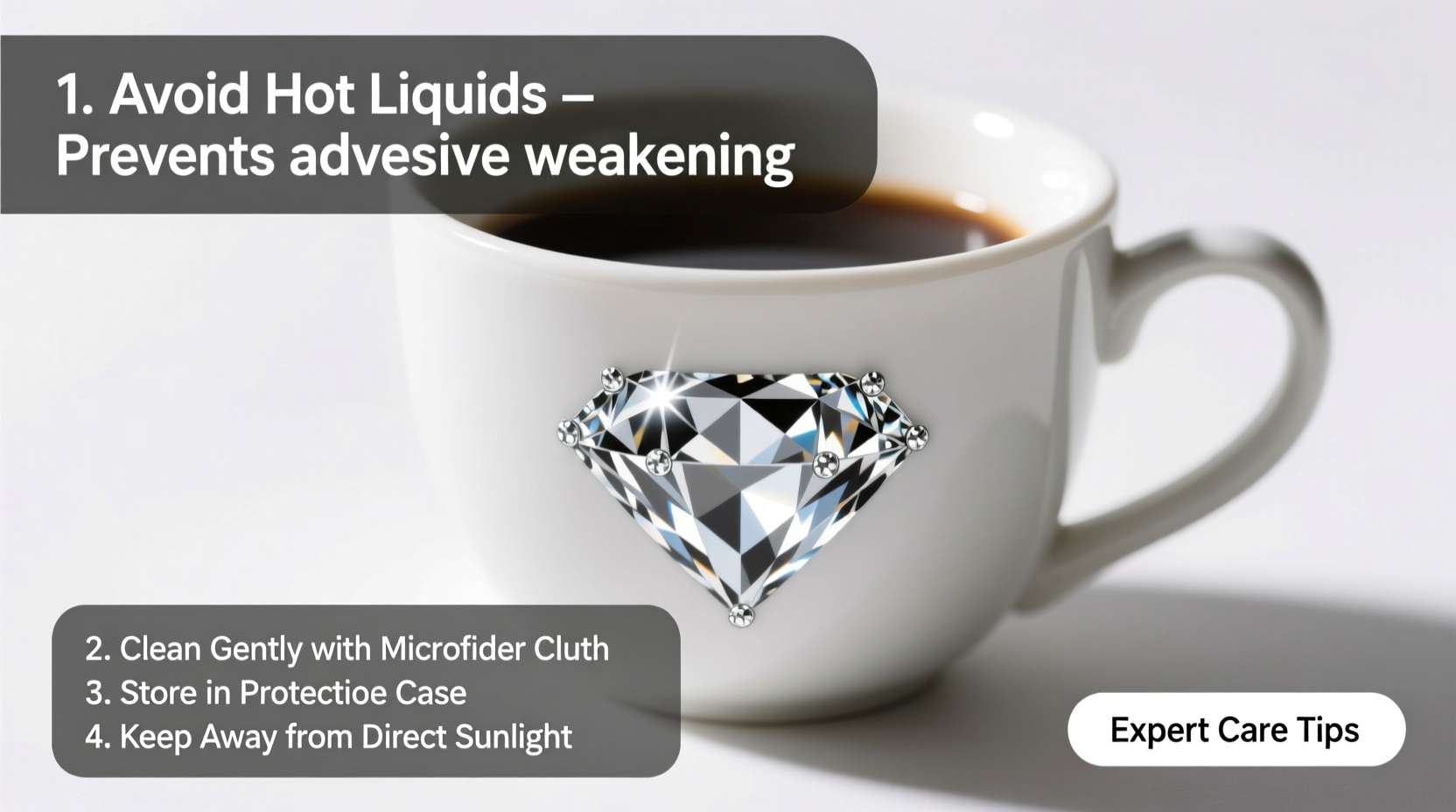Self-adhesive diamond designs have transformed plain drinkware into eye-catching accessories, popular in both personal use and promotional gifting. These shimmering embellishments, often made from rhinestones or acrylic gems with adhesive backing, add flair to tumblers, mugs, and travel cups. However, their beauty is fragile if not properly maintained. Unlike permanent vinyl or paint, these designs are sensitive to moisture, friction, and temperature changes. Without careful handling, the diamonds can lift, crack, or lose their luster within weeks. Understanding how to care for them ensures your cup remains a standout piece for months—or even years.
Understanding Self-Adhesive Diamond Designs

These decorative elements typically consist of small, flat-backed crystals or imitation stones pre-mounted on a transfer tape with a pressure-sensitive adhesive. They’re designed for easy application on smooth surfaces like stainless steel, glass, or plastic tumblers. While convenient, the adhesive bond is not as durable as industrial-grade coatings. It relies heavily on proper surface preparation and post-application care. The longevity of the design depends less on the quality of the stone and more on how well the adhesive performs under daily use conditions.
Most manufacturers recommend hand washing only and avoiding prolonged exposure to water, especially hot water, which weakens the glue over time. UV exposure can also degrade the adhesive and cause discoloration in lower-quality stones. Knowing these limitations helps set realistic expectations and informs better maintenance habits.
“Many people assume these designs are waterproof because they’re on drinkware, but that’s a misconception. The adhesive is water-resistant, not waterproof.” — Lena Patel, Product Designer at CupArt Studio
Step-by-Step Guide to Daily and Long-Term Care
Maintaining a diamond-decorated cup requires consistent, gentle practices. Follow this timeline-based routine to maximize durability:
- After Each Use: Rinse the cup immediately with cool water. Avoid letting liquid sit near the design edges, where moisture can seep underneath.
- Drying: Pat dry with a soft microfiber cloth, starting from the top of the design and moving outward to prevent lifting.
- Weekly Maintenance: Inspect each stone for looseness. Use a cotton swab to gently clean around the base, removing any residue buildup.
- Monthly Check-Up: Examine the entire design for gaps or bubbles. Apply a tiny drop of clear nail polish or craft sealant at the edge of any lifting stone to re-secure it.
- Seasonal Refresh: If the cup has been stored or used infrequently, clean the surface with isopropyl alcohol (70%) and reseal exposed edges to reinforce adhesion.
Do’s and Don’ts: Best Practices Table
| Do’s | Don’ts |
|---|---|
| Hand wash with mild soap and cool water | Put in dishwasher or soak for extended periods |
| Dry immediately with a lint-free cloth | Allow air drying upside down (traps moisture) |
| Store upright in a padded container | Store in humid areas like bathroom cabinets |
| Use a UV-protective spray for outdoor use | Leave in direct sunlight (e.g., car dashboards) |
| Touch up loose stones with clear sealant | Peel or pick at stones with fingernails |
Real Example: A Café Owner’s Experience
Sophie Reynolds, who runs a boutique coffee shop in Portland, uses custom diamond-decorated tumblers for staff uniforms and customer giveaways. Initially, she noticed that nearly 40% of the designs began peeling within six weeks. After consulting with her supplier, she discovered her team was placing the cups in the dishwasher during busy shifts. She implemented a new protocol: designated hand-washing bins behind the counter, color-coded racks for drying, and monthly touch-up kits containing sealant and replacement stones. Within three months, failure rates dropped to under 5%. “It wasn’t the product’s fault—it was our cleaning habits,” she said. “Once we treated them like delicate accessories instead of regular cups, everything changed.”
Essential Checklist for Longevity
- ✅ Clean only by hand using cool water and mild detergent
- ✅ Dry thoroughly before storing
- ✅ Store upright in a dry, shaded location
- ✅ Inspect weekly for lifting or debris under stones
- ✅ Seal edges every 3–4 months with a waterproof clear coat
- ✅ Avoid contact with oils, lotions, or citrus-based cleaners
- ✅ Rotate usage among multiple cups to reduce wear
Frequently Asked Questions
Can I repair a diamond that has fallen off?
Yes. Carefully clean the area with rubbing alcohol and let it dry completely. Use a small amount of E6000 or Gem-Tac adhesive to reattach the stone. Hold it in place for 30 seconds and allow 24 hours to cure before use.
Will sealing the design make it dishwasher-safe?
No. Even with sealing, dishwashers expose cups to high heat, pressure, and harsh detergents that compromise adhesive bonds over time. Hand washing remains the only safe method.
How long should a well-maintained diamond design last?
With proper care, most designs last 12 to 18 months. High-quality stones with strong adhesive backings and protective topcoats can last up to two years, especially if used occasionally and stored correctly.
Conclusion: Make Care a Habit, Not an Afterthought
The allure of self-adhesive diamond designs lies in their instant transformation of everyday objects into personalized art. But their beauty demands respect—not just admiration. By integrating simple, consistent care habits into your routine, you preserve both function and aesthetics. Think of your decorated cup not just as a vessel for drinks, but as a crafted item worthy of mindful treatment. From immediate drying to seasonal sealing, each step contributes to lasting brilliance.









 浙公网安备
33010002000092号
浙公网安备
33010002000092号 浙B2-20120091-4
浙B2-20120091-4
Comments
No comments yet. Why don't you start the discussion?